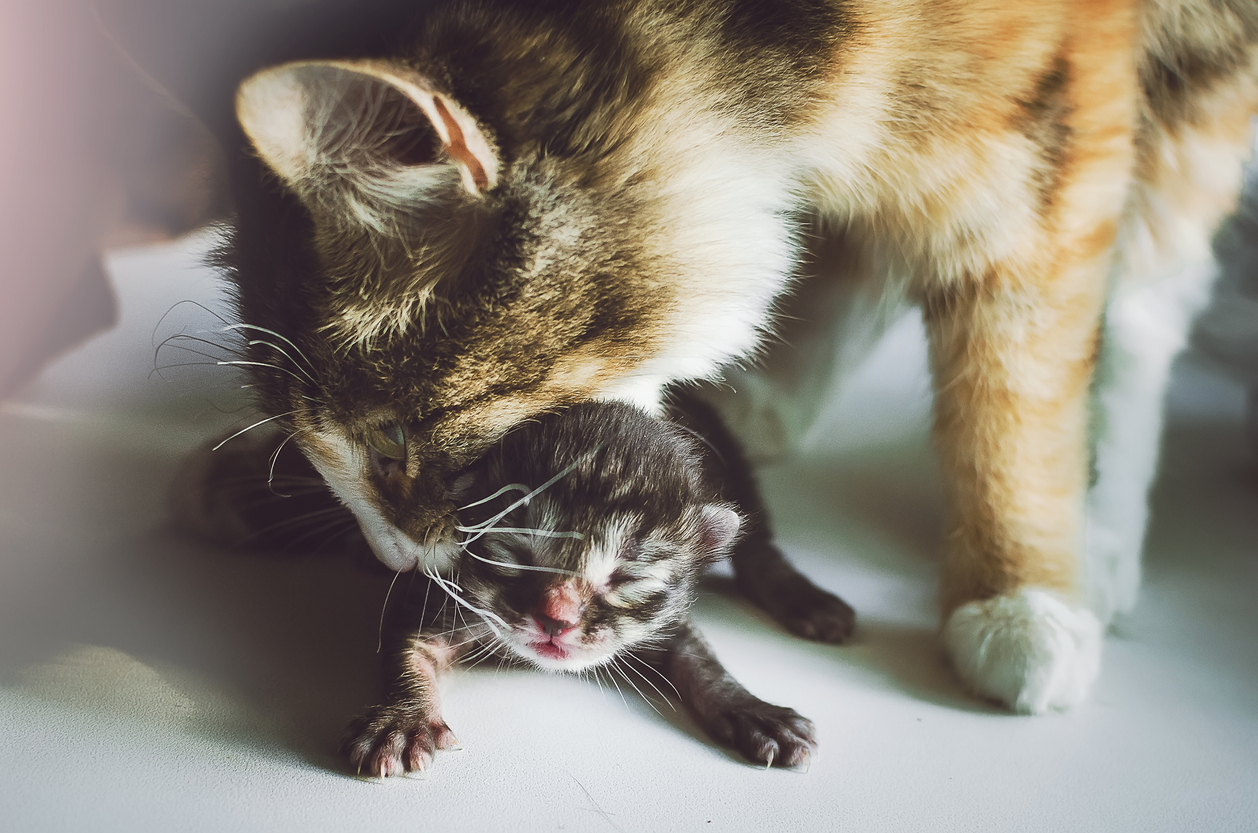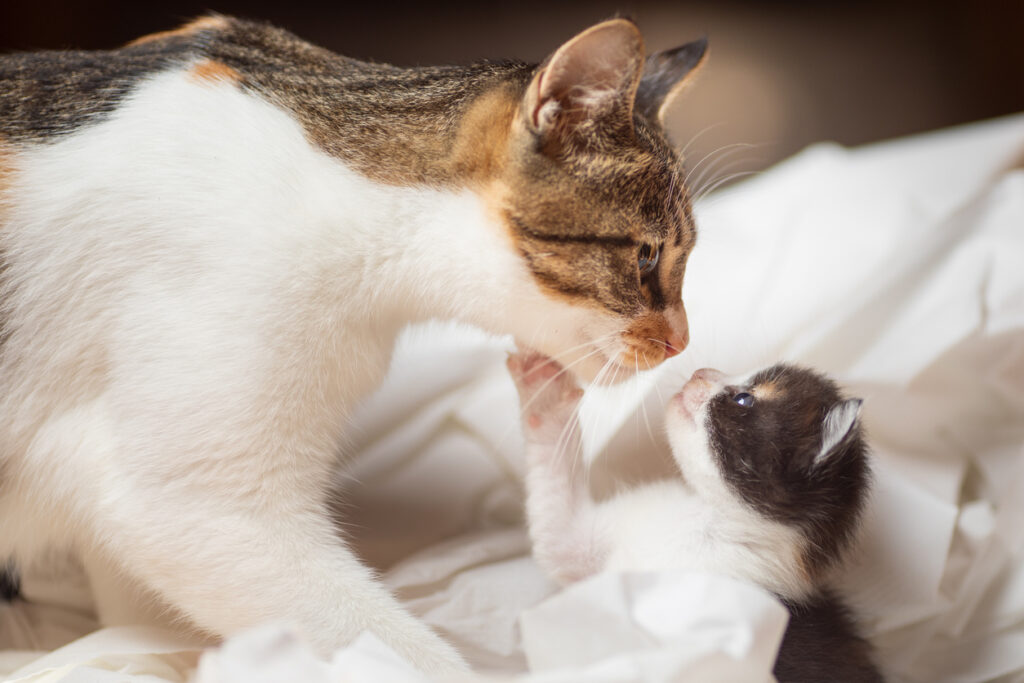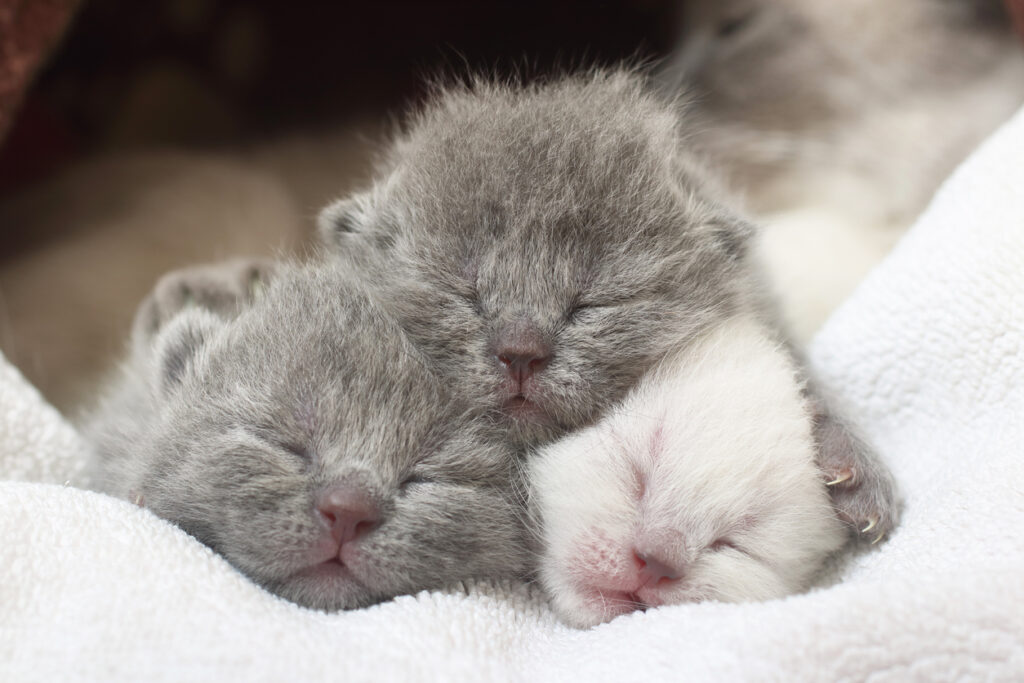Stop Cat Scruffing Now

Scruffing means firmly holding and lifting a kitten by the scruff, the skin on the back of their neck, to carry or control them. It causes the kitten to become momentarily immobilised, which seems like a convenient control setting. But scruffing beyond three months of age causes fear, pain and injury. We take a close look at scruffing, and why we need to stop using it as a method of controlling a cat.
The Purpose of Scruffing
Kittens are born blind and deaf. They rely entirely on their mother for warmth, nourishment and grooming. Their eyes and ear canals only begin to open around a week from birth.
From around four weeks of age, kittens become more active and start to walk. Should they stray, their mother will pick them up by the scruff and carry them back to keep them close, instinctively keeping her kittens within a secure boundary. Kittens naturally respond, becoming limp and completely compliant, knowing that their mother knows best and will keep them safe from harm. At this young age, they begin to wean, but still need their mother’s milk, and she will teach self-grooming and socialisation skills.
From about eight weeks of age, they can confidently run, pounce and climb; it is mischief season. Their mother’s instinct to carry them by their scruff tapers off. This is also when a kitten’s response changes. As they grow, they put on weight and their bodies lengthen. It is not the easy experience it once was for these young ones.

Effect of Scruffing
As they mature, the kittens’ apparent acquiescence in response to scruffing is actually freezing in fear. The increase in weight and length means that it causes soft tissue damage and bruising. What was once a brilliant way for cat mothers to keep their kittens close is becoming a terrifying, painful experience. Because cats are so sensitive, scruffing only teaches them to be mistrustful and defensive.
The main causes of perceived bad behaviour in cats are fear and pain. This is significant, because scruffing elicits both of these responses, putting the cat in danger of becoming and being labelled as an aggressive cat when it is a natural, understandable self-protection mechanism.
Alternatives to Scruffing
When it comes to healthcare, any veterinarian worth their salt has the knowledge and experience in handling fearful, aggressive cats. It follows that animal care professionals with the right cat-handling experience will cause less stress to any cat patient. In the instance that a veterinarian or vet nurse resorts to cat scruffing, guardians have the right to immediately instruct them to stop.
International Cat Care, a charity dedicated to cat welfare, encourages veterinary clinics adhere to their stance on scruffing.
“There may be very rare exceptions when scruffing is needed as a very last resort for temporary restraint if there is an imminent danger to the cat or to personnel, but scruffing should never be used as a routine means of restraint.“
A 2020 study shows passive restraint causes much less stress to a cat than scruffing or full-body restraint. Passive restraint is when the handler holds a cat with the least amount of restriction, allowing them to take their preferred position: standing, sitting or lying down. It causes less distress and no pain to the cat.
Taking the time to practice passive restraint is more effective and less stressful for a cat. Using passive restraint will ensure a guardian does not scare or injure their beloved cat, preserving the precious, positive relationship between cat and guardian. For more on cat behaviour, read Reasons Why Cats Bite.

